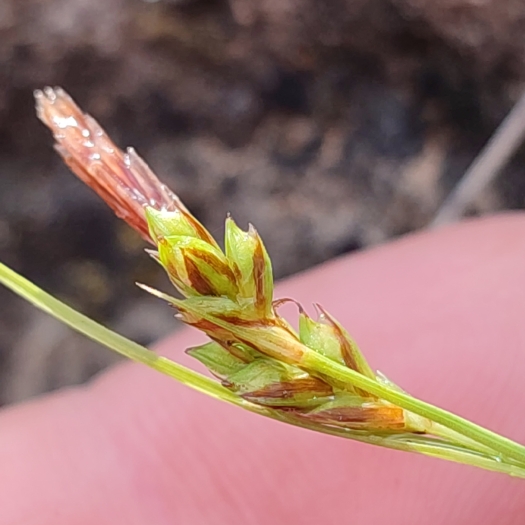Broad Looseflower Sedge
(Carex depressa)
Broad Looseflower Sedge (Carex depressa)
/
/

Quentin Groom
Public Domain
Image By:
Quentin Groom
Recorded By:
Copyright:
Public Domain
Copyright Notice:
Photo by: Quentin Groom | License Type: Public Domain | License URL: http://creativecommons.org/publicdomain/zero/1.0/ | Rights Holder: Quentin Groom | Publisher: iNaturalist | Date Created: 2021-06-04T18:09:13-07:00 |















Estimated Native Range
Summary
Carex depressa, commonly known as Broad Looseflower Sedge, is a perennial sedge that exhibits evergreen or semi-deciduous characteristics depending on the climate. It is native to a variety of wetland habitats including bogs, wet meadows, and marshes across the Mediterranean region, the Middle East, and the Caucasus. This sedge typically grows to a height of 0.5-3 feet (0.2-0.9 meters) and can spread up to 3 feet (0.9 meters) wide. The plant forms dense clumps of grass-like leaves and produces inconspicuous brown flower spikes in late spring to early summer. The foliage remains attractive throughout the growing season, providing textural interest in garden settings.
Broad Looseflower Sedge is valued for its adaptability to wet conditions and is often used in rain gardens, water features, and as a ground cover in moist, shaded areas. It thrives under a range of light conditions from full sun to full shade, making it versatile for various landscape applications. While it prefers high moisture levels, it can tolerate occasional dry spells once established. Carex depressa is also useful for erosion control due to its dense root system. Gardeners should be aware that in ideal conditions, it can spread vigorously, potentially becoming invasive. Regular maintenance may be required to keep it in check.CC BY-SA 4.0
Broad Looseflower Sedge is valued for its adaptability to wet conditions and is often used in rain gardens, water features, and as a ground cover in moist, shaded areas. It thrives under a range of light conditions from full sun to full shade, making it versatile for various landscape applications. While it prefers high moisture levels, it can tolerate occasional dry spells once established. Carex depressa is also useful for erosion control due to its dense root system. Gardeners should be aware that in ideal conditions, it can spread vigorously, potentially becoming invasive. Regular maintenance may be required to keep it in check.CC BY-SA 4.0
Plant Description
- Plant Type: Grass
- Height: 0.5-3 feet
- Width: 1-3 feet
- Growth Rate: Moderate
- Flower Color: N/A
- Flowering Season: Summer, Fall
- Leaf Retention: Evergreen
Growth Requirements
- Sun: Full Shade, Part Shade, Full Sun
- Water: High
- Drainage: Slow, Medium
Common Uses
Bird Garden, Deer Resistant, Low Maintenance
Natural Habitat
Wetland habitats including bogs, wet meadows, and marshes
Other Names
Common Names:
Scientific Names: , Carex depressa, Carex depressa var. neyrautii, Carex halleriana subsp. depressa,
GBIF Accepted Name: Carex depressa Link